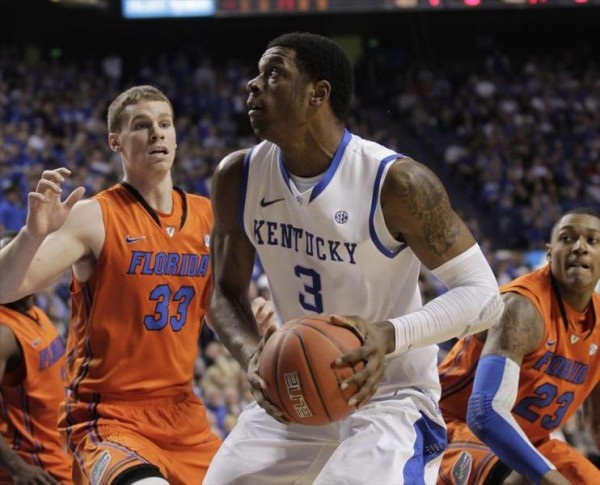SEC Caters to Fans and Ensures Rivals Will Play Twice A Year
Posted by EJacoby on June 5th, 2012Scheduling controversies have been prevalent in the news recently, most notably involving Kentucky, Indiana, and their inability to continue a classic rivalry. Supporters of both schools are upset about the (currently) canceled tradition, and rightfully so. So the fact that the SEC announced Monday that it plans to establish permanent basketball rivalries to play twice a year is a positive development in giving fans the matchups they really want to see. Even as the conference expands to 14 teams next season, top combatants (Kentucky-Florida, Auburn-Alabama to name a few) will still see each other two times every year. As part of an 18-game conference schedule, teams will also play four other opponents who will rotate in a three-year cycle twice per year, and play the eight remaining teams once per season. There are pros and cons to this new scheduling format, but the league deserves praise for its progressive decision to focus on key rivalries.
The establishment of ‘permanent rivals’ is something the Big East failed to explore when it expanded to 16 teams a while ago, leaving its members to play three random teams twice per year as part of its 18-game schedule. As a result, old school rivalries like Georgetown-Syracuse have diminished. Instead of securing a home-and-home series against the Orange, the Hoyas had to travel to ‘Cuse last season and never got a rematch after suffering a painful overtime defeat. The SEC won’t have that problem going forward. Starting immediately in 2012-13, permanent rivals will see each other twice a year, guaranteed. The rivalry pairings are:
- Kentucky–Florida
- Tennessee–Vanderbilt
- Auburn–Alabama
- Mississippi State–Ole Miss
- South Carolina–Georgia
- LSU–Texas A&M
- Arkansas–Missouri
As far as the pairing selections go, there is little to complain about. The conference did a terrific job at identifying rivalries, whether they are obvious longtime foes (Auburn and Alabama), in-state combatants (Ole Miss and Mississippi State), or modern-day hostility (Kentucky and Florida). The only surprising move here is that the two new additions to the conference, Missouri and Texas A&M, are not paired together. Those two schools had previously been matched up in the Big 12 for years, and it would have made sense to keep that series together in the new league. But perhaps the SEC is sending a message that new additions are no longer affiliated with their old conferences in any way, and it’s time to get used to their new league mates. As such, Missouri-Arkansas and LSU-Texas A&M are solid pairings that also make sense geographically. Particularly notable is that Arkansas coach Mike Anderson now gets to face his old team twice every year, something that Mizzou fans are excited for.
Another interesting facet of the new schedule, and one that’s sure to cause some in-season debate, is that the league is promoting the likely possibility of unbalanced schedules amongst its competitors. The idea that Florida has to play an elite Kentucky team twice every season, while Alabama gets to play struggling Auburn two times each year, immediately creates some competitive balance issues. The unequal schedule may essentially render the 1-through-14 conference standings meaningless, since teams will have very different looking in-conference strength of schedules each season. But that’s a sacrifice that the conference was willing to make in order to ensure that ‘War Eagle-Roll Tide’ rolls on, and two of the last six National Champions (UK and UF) continue to battle twice a season.
When analyzing the SEC pecking order for years to come, it will be important to look at individual teams’ in-conference schedule strengths in addition to just viewing their place in the standings. And that’s not such a bad thing, as it encourages fans to dig deeper into season results rather than just referencing a one-click standings update. But the most important detail of all is that the longstanding SEC rivalries will still remain, even as conference realignment changes the landscape of the league.
Evan Jacoby is a regular contributor for RTC. You can find him @evanjacoby on Twitter.











































